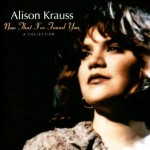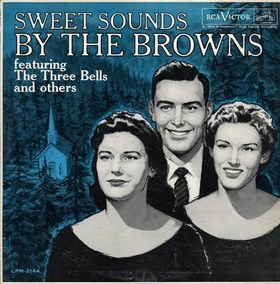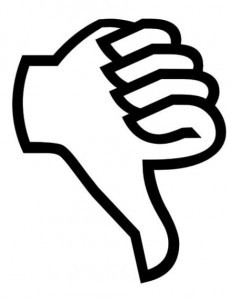
Country Music Hall of Fame Welcomes Garth Brooks, Connie Smith, and Hargus “Pig” Robbins
 Garth Brooks, Connie Smith, and keyboardist Hargus “Pig” Robbins will join the Country Music Hall of Fame in 2012.
Garth Brooks, Connie Smith, and keyboardist Hargus “Pig” Robbins will join the Country Music Hall of Fame in 2012.

 Garth Brooks, Connie Smith, and keyboardist Hargus “Pig” Robbins will join the Country Music Hall of Fame in 2012.
Garth Brooks, Connie Smith, and keyboardist Hargus “Pig” Robbins will join the Country Music Hall of Fame in 2012.

 Cover songs can be a hot topic at just about any given time. We recently got to hear a somewhat underwhelming OneRepublic cover by Faith Hill, which Kevin recently reviewed. Other recent attempts include Sara Evans’ pop-country reworking of Rod Stewart’s “My Heart Can’t Tell You No,” as well as last year’s polarizing Beyoncé cover by Reba McEntire.
Cover songs can be a hot topic at just about any given time. We recently got to hear a somewhat underwhelming OneRepublic cover by Faith Hill, which Kevin recently reviewed. Other recent attempts include Sara Evans’ pop-country reworking of Rod Stewart’s “My Heart Can’t Tell You No,” as well as last year’s polarizing Beyoncé cover by Reba McEntire.
Since cover songs are so much fun to talk about, I thought I’d weigh in on a few well-known cover songs from the past few years – the good ones, as well as a few that we would rather forget. My criteria is simple: A good cover song should bring something new to the table, and the song should be treated in a way that is well-suited to the artist as well as the genre. This list focuses specifically on country covers of non-country songs.

 As I’m sure the rest of you do, I make playlists all the time. Many of them are lists of individual artists, but some of them have a concept.
As I’m sure the rest of you do, I make playlists all the time. Many of them are lists of individual artists, but some of them have a concept.
My latest playlist is of covers. First, I have the original version (or the one that’s famous for being the original) followed by my favorite cover of it. My only rule is that I have to like both versions. So, songs where I like the cover but not the original won’t make the list.

 It’s hard to believe that there once was a time that country artists put out two full-length albums a year. If they were part of a regular superstar duet team, like Conway Twitty & Loretta Lynn or Porter Wagoner & Dolly Parton, a fan might hear as many as four new studio albums from their favorite artist.
It’s hard to believe that there once was a time that country artists put out two full-length albums a year. If they were part of a regular superstar duet team, like Conway Twitty & Loretta Lynn or Porter Wagoner & Dolly Parton, a fan might hear as many as four new studio albums from their favorite artist.
By the time that I got into country music – twenty years ago, natch – things had slowed down a bit. Artists usually released a new album every 12-18 months. Sometimes they’d push it to two years, but not often.
Those were the days. Waits between album releases have gotten crazy lately. I’m all for taking the time to get it right, but once we push past the half-decade mark, things have gone too far. Sure, we’re given side projects to carry us over, but there’s no substitute for a full-length studio album of all-new material.
Here are five artists who I’d really love to see make a long-awaited return with a new album in 2011, along with a brief rundown of the side projects that they’ve been busy with while we’ve waited for that new album:

 Written by Music & More blogger Bob Losche.
Written by Music & More blogger Bob Losche.
Connecticut born songwriter Gary Burr got his first break when he broke his leg in a high school soccer game. With time on his hands, he taught himself to play the guitar and began writing songs. His second break came in 1982 when, without a co-writer, he penned Juice Newton’s “Love’s Been a Little Bit Hard on Me”. That same year, he became the lead singer for Pure Prairie League after Vince Gill left the group to pursue a solo career. Gary remained with PPL until 1985 and headed to Nashville in the late 1980’s. He has since been awarded ‘Songwriter of the Year’ on three separate occasions by three different organizations: Billboard, Nashville Songwriter’s Association International, and ASCAP. He has also received over twenty of ASCAP’s recognition awards for radio play activity, and cds featuring his songs have sold more than 50 million units world-wide. He’s currently affiliated with SESAC. Most recently, he was Carole King’s guitarist on her “Living Room Tour”, performing some of his own songs as well.
If you go to Gary’s website and click on Discography you’ll see a Short List of 35 of his best known songs, in alphabetical order by recording artist. If you click on Full List, you see the names of about 170 songs. You’ll find hits and albums track (“hidden treasures” to some) by country artists such as Hal Ketchum, Patty Loveless, Randy Travis, Reba McEntire, Garth Brooks, Tanya Tucker, Ty Herndon, Faith Hill, Leann Rimes, Mary Chapin Carpenter, Gary Allan, Andy Griggs, Kathy Mattea, Lorrie Morgan, Terri Clark, Collin Raye, Doug Stone, Ricky Van Shelton, Diamond Rio, Conway Twitty, Chely Wright and many others plus pop artists Kelly Clarkson, Clay Aiken, etc . The website list does not include the current Sarah Buxton hit “Outside My Window”.

 As with the similar CMA category of Single of the Year, looking over the history of this category is the quickest way to get a snapshot of country music in a given year. There is a quite a bt of consensus among the two organizations here, and it is very rare for the winner at one show to not at least be nominated at the other. The winners list here would make a great 2-disc set of country classics, at least for those who don’t mind a little pop in their country. The ACM definitely has more of a taste for crossover than its CMA counterpart, and the organizations have only agreed on 17 singles in the past four decades and change.
As with the similar CMA category of Single of the Year, looking over the history of this category is the quickest way to get a snapshot of country music in a given year. There is a quite a bt of consensus among the two organizations here, and it is very rare for the winner at one show to not at least be nominated at the other. The winners list here would make a great 2-disc set of country classics, at least for those who don’t mind a little pop in their country. The ACM definitely has more of a taste for crossover than its CMA counterpart, and the organizations have only agreed on 17 singles in the past four decades and change.
As always, we start with a look at this year’s nominees and work our way back to 1968.
2010
There’s usually a “Huh?” nominee among the ACM list in recent years. This year, it’s David Nail. Good for him! Currington hasn’t won yet for this hit, even though he got himself a Grammy nomination for it. With Lady Antebellum reaching the upper ranks of the country and pop charts with “Need You Now”, my guess is that they’re the presumptive favorites. Then again, Miranda Lambert is a nominee for the third straight year, and she’s up for her biggest radio hit.
2009
Adkins has been a fairly regular fixture on country radio since 1996, but this was his first major industry award. He also won the ACM for Top New Male Vocalist in 1997.

 The ACM Awards has traditionally been overshadowed by the CMA Awards, despite its longer existence. This is for several reasons. First, the ACM originally existed to emphasize the West Coast country music scene, whereas the CMA Awards represented Nashville from the start. The ACM has also been more commercially-oriented from the beginning, as the history of this category proves. Eighteen of the last twenty winners in this ACM category are multi-platinum sellers, and the organization allowed greatest hits albums to compete for more than a decade.
The ACM Awards has traditionally been overshadowed by the CMA Awards, despite its longer existence. This is for several reasons. First, the ACM originally existed to emphasize the West Coast country music scene, whereas the CMA Awards represented Nashville from the start. The ACM has also been more commercially-oriented from the beginning, as the history of this category proves. Eighteen of the last twenty winners in this ACM category are multi-platinum sellers, and the organization allowed greatest hits albums to compete for more than a decade.
Still, the ACM category has bragging rights of its own. Critically-acclaimed albums like Storms of Life, Trio, Killin’ Time and Crazy Ex-Girlfriend won at the ACMs but were overlooked by the CMAs. Additionally, women have also been far more successful at this ceremony. Only five women have ever won the CMA Album trophy, and one of them was Sissy Spacek! At the ACMs, women have dominated the category for the past three years, and the category has honored everyone from Loretta Lynn and Donna Fargo to K.T. Oslin and Shania Twain.
A special note about ACM flashbacks. Like the Grammys, the ACMs issue their award for a given year the following year, so the awards for 2009, for example, are given out in 2010. For the purposes of the flashbacks, Country Universe notes the year the award is presented. While the ACM first presented awards in 1966, the Album category wasn’t introduced until 1968.
As with other flashbacks, we begin with a look at this year’s nominees:
2010
Three previous winners – Miranda Lambert, Brad Paisley, and Carrie Underwood – compete against the debut albums of two hot bands. Lady Antebellum and Zac Brown Band each picked up a Grammy this year and are well represented on the rest of the ACM ballot. This is a very competitive race. Even the sales-friendly nature of the ACMs doesn’t help much here, as four of these albums are platinum and Lambert’s just went gold.
2009
Taylor Swift became the third consecutive female artist to win in this category, a feat that would’ve seemed unthinkable earlier in the middle part of the decade, when country radio all but exiled women from radio.

 The Three Bells
The Three Bells
The Browns
1959
Written by Dick Manning, Bert Reisfeld and Jean Villard
The structure of “The Three Bells” should be familiar to any listener of contemporary country music. A genre that prides itself on its simplicity is ambitious enough to tell an entire life story in under four minutes. It’s an approach that has created several classic singles like “Where’ve You Been” , “Time Marches On” and “How Can I Help You Say Goodbye.”
One of the most significant historical examples of this structure comes from The Browns, who had a massive crossover hit with their 1959 single “The Three Bells.” It’s a simple tale. The church bells ring three times throughout the course of Jimmy Brown’s life: on the day of his baptism, the day of his wedding, and the day of his funeral. The preacher has words of wisdom for each occasion, ones that would be familiar to any Christian churchgoer, Catholic or otherwise.
That the character shares the same name as lead singer Jim Ed Brown and takes place in a little country town might lead you to believe that this was a song of Nashville origin, but it actually began its life and its worldwide success in France as the story of Jean-François Nicot. Originally written in French, “Les Trois Cloches” was an international hit for Édith Piaf, the songstress that was recently immortalized in the film La Vie En Rose. The Browns, composed of siblings Jim Ed, Maxine, and Bonnie, had been performing the song since seeing it Les Campagnons de la Chanson performing an English-language version on the Ed Sullivan Show in 1952.

 While Taylor Swift mania continues to grow, there’s another impressive accomplishment being achieved by two veterans of country music on the opposite end of the age spectrum.
While Taylor Swift mania continues to grow, there’s another impressive accomplishment being achieved by two veterans of country music on the opposite end of the age spectrum.
Contrary to what is commonly believed, there has always been a ceiling on how old you could be and still get country airplay. This year, both George Strait and Reba McEntire have been working steadily to shatter that ceiling.
Take a look at the age of country legends when they earned their most recent top ten solo hit:

 The banality continues. Read Part 1 here.
The banality continues. Read Part 1 here.
The Worst Singles of the Decade, Part 2: #40-#31
#40
Kenny Chesney & George Strait, “Shiftwork”
A stab at the working class blues still ends up on a tropical island by the third verse.
#39
Anita Cochran featuring The Voice of Conway Twitty, “(I Wanna Hear) A Cheatin’ Song”
In which a duet is formed from beyond the grave by chopping up bits and pieces of old Conway Twitty songs and reassembling them word by word.
#38
Billy Dean, “Let Them Be Little”
Thirty seconds in and you’ll be headed to your dentist for a cavity filling.
#37
Montgomery Gentry, “She Couldn’t Change Me”
Sorry boys, but “some hip-hop mess” would be a great improvement over this hillbilly trainwreck.
Copyright © 2025 | MH Magazine WordPress Theme by MH Themes